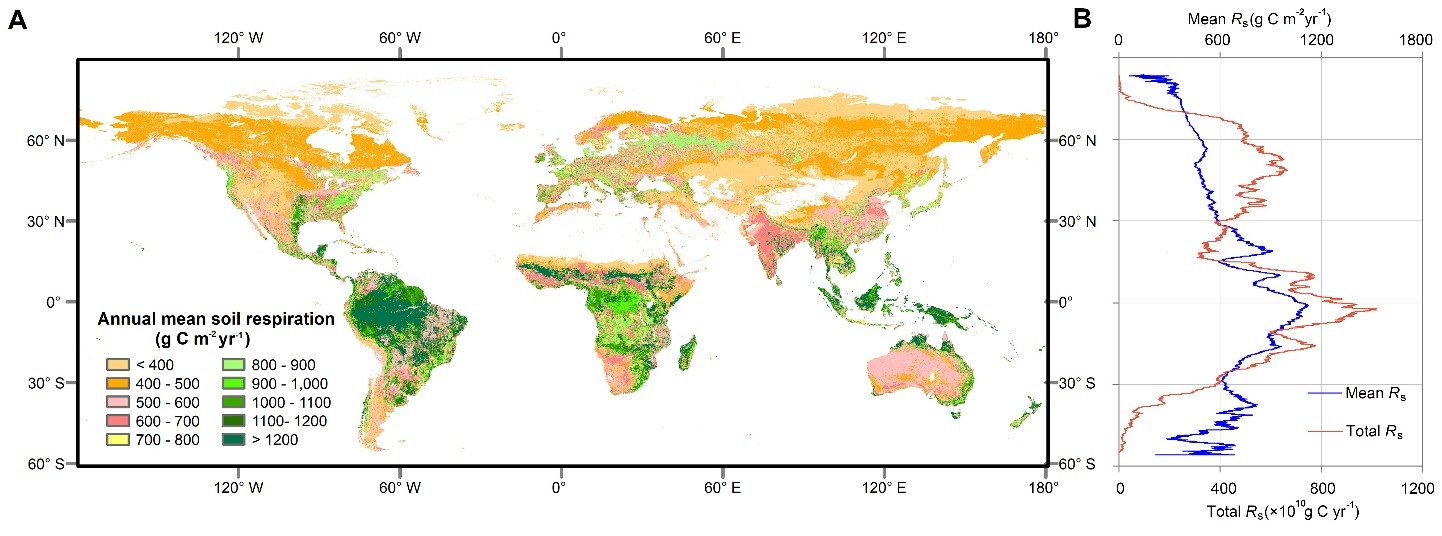Researchers Reveal Relationship of Global Soil Respiration with Climate and Land Cover Changes
Over two-thirds of terrestrial carbon is stored belowground, and a significant amount of the atmospheric CO2 assimilated by plants is respired by roots and microbes in soils. Soil respiration (Rs), consisting of root respiration and microbial respiration, is the largest flux of CO2 from terrestrial ecosystems to the atmosphere.
Rs change can be affected by many factors, and climate factors, e.g., air temperature and precipitation, have been commonly investigated due to their direct or indirect effects on Rs metabolism. Land-cover change can also affect Rs by changing vegetation structure, plant species composition, and soil properties.
However, few studies have comprehensively considered both climate and land-cover change effects on the spatial and temporal variations in global Rs.
A research team led by Prof. NIU Zheng from the State Key Laboratory of Remote Sensing Sciences, Aerospace Information Research Institute (AIR) of the Chinese Academy of Sciences (CAS), and their cooperators proposed a remote-sensing driven model to estimate global Rs and analyzed its relationship with climate and land-cover.
The study was published in Science Advances on Oct. 7.

(A) Global distribution of mean annual Rs between 2000 and 2014, (B) Latitudinal distribution of mean annual Rs (blue line) and total annual Rs (orange line).
Previous studies suggested that climate change is the main factor leading to the change of global Rs. However, the researchers revealed that land-cover change played a more important role in regulating Rs changes in temperate and boreal regions during 2000-2014. Significant changes in Rs occurred more frequently in areas with significant changes in short vegetation cover than in areas with significant climate change.
These findings contribute to our understanding of global Rs patterns and highlight the importance of land-cover change in driving global and regional Rs changes.
The study was supported by the National Key Research and Development Program of China, the Strategic Priority Research Program of the Chinese Academy of Sciences, and the National Natural Science Foundation of China.



News & Events